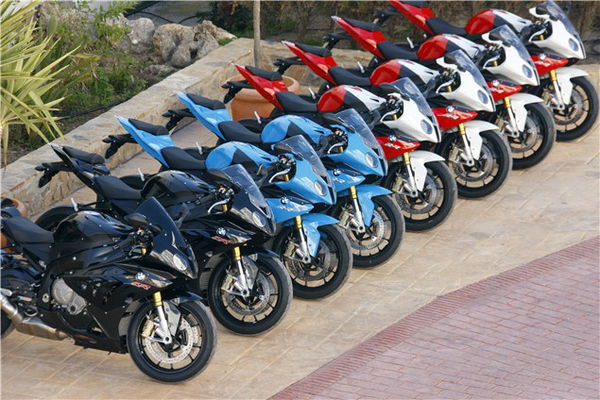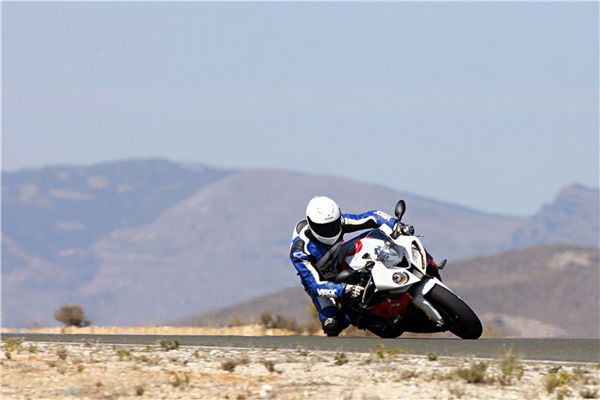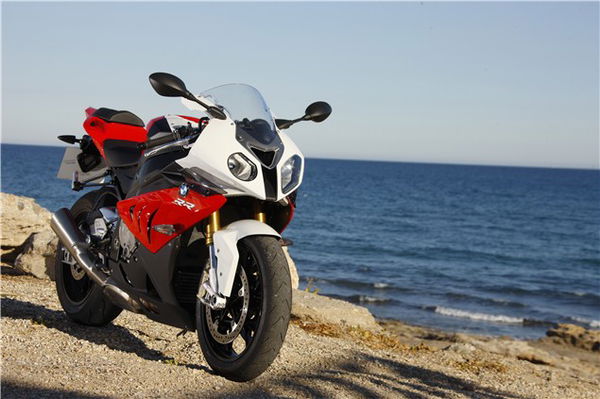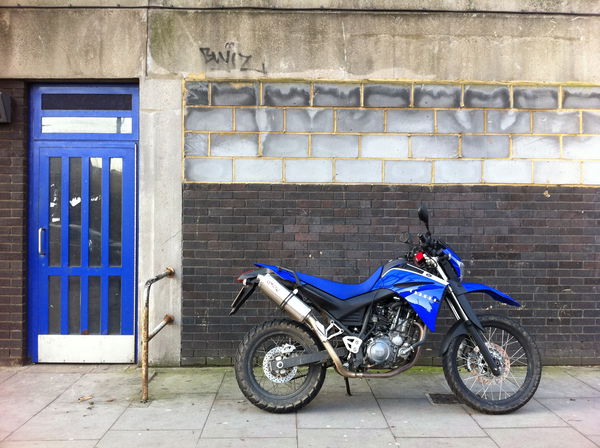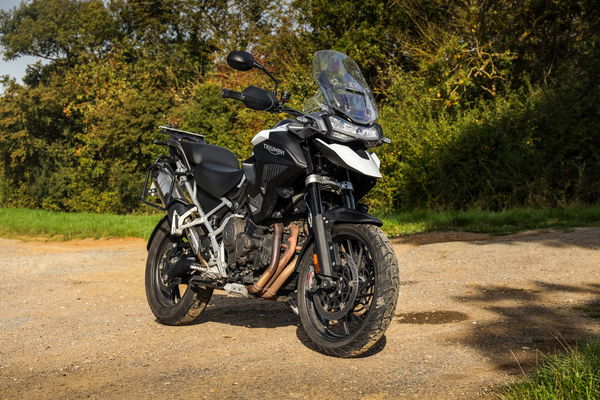2011 BMW S1000RR vs. 2012 S1000RR track review
We pitched the old and new models head to head on track
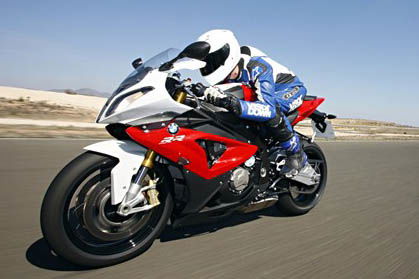
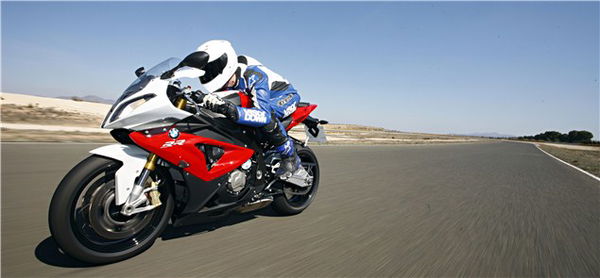
Once you enter a bike in the Superbike or Supersport class, by its very nature, you have to keep up. Even if you're right at the sharp end. BMW's gadget-packed S1000RR has hardly struggled for sales since its launch. The original model's crankshaft was revised to make the engine more reliable, but other than that, it's stayed put. In last year's sales charts, its second year, the S1000 RR trounced all but Honda's Fireblade. That's some going.
When it was first launched, it caught the opposition more than napping, they were in a deep sleep. I'm sure the established marques were wary but I can't imagine they were prepared to see their faithful buyers forming a queue at their local BMW dealership; a marque long associated with clichés featuring pipes, slippers and Sam Brownes.
I would have thought it would be hard to get BMW to tweak a font in their sales brochure, let alone build a Superbike. To this day, I can't imagine how hard it must have been to persuade the head honchos at BMW to back the project.
If you bought one of the original bikes, I'm keen to know what you were riding before and why you made the switch. Was it the 185bhp at the rear wheel, was it brand snobbery, was it the traction control and ABS?
I took the original bike to the Moroccan border and back in a week, 3,200 miles through all weathers. But mostly rain. What most appealed to me about the original S1000RR were the gadgets; traction control and ABS, you can keep your power modes. When it's 1-degree outside, you're being pelted with slushy rain, you're knackered and you've got 80 miles to get to the warmth of a hotel, ABS and traction control make a slog a cinch.
I'm glad BMW built the S1000RR because it's helped revitalize the class and introduce a word I think most people were afraid to mention: safety.
Deep down I think the majority of people bought the S1000RR because the headline says '185bhp mental missile' but the smallprint says 'We know you don't ride as much as you used to, but you still think you're tastier than the next bloke and let's be honest, everyone expects BMWs to have safety features so no-one will look down on you for them. So get stuck in, we'll sit over here and keep an eye on things for you'.
There's traction control and there's traction control. Early versions, like that on the 1198S, MV F4 and S1000RR would stop you having a big one but they'd get in the way when you're pressing on, especially on track. Most people I know turned it off.
Proper traction control - not just an emergency cutout - is now available on Aprilia's RSV4, Ducati's Panigale, Yamaha's R1 and for me, the best setup is on Kawasaki's ZX-10R. These systems are so subtle you can barely feel them working. If what's on the old S1000RR is a Super Nintendo, then the new crop are like a PlayStation 3. The only clue to them working is a light on the dash that gently flickers when you're driving out of corners rather than cutting the power, making you headbutt the top yoke. When you're bang on it and the traction control is keeping your limits from the limit, it's a magical feeling.
Now I know you'll say you don't need it but the fact is, if you want to explore what your bike is capable of, you do. On the 2012 S1000RR, although the traction control is improved from the first version, it's still not as good as what else is out there. It's still slightly cumbersome but it is better than it was.
On a bike that's as good as the S1000RR it's hard to pick holes, but that's one of them. I was disappointed by that but good traction control is a lot of fun. Rubbish traction control is almost worse than none. It's a big deal to me, it's probably the sort of thing 95% of owners won't care about.
I'm glad I got that off my chest.
All the other changes get my vote. The most obvious being the styling, but underneath BMW have made a host of small changes. It's not all-new but heavily revised.
Switching from the old bike to the new model, the riding position feels almost identical but the new model's bars are set wider, making it feel more like a race bike. The steering feels no different and while the steering head angle has been altered, you'd struggle to see the difference, even with a microscope. The wider bars give you more leverage and it's this or the 10mm shorter wheelbase that makes the bike fall into the corner that bit easier.
BMW haven't altered the engine, but the bike feels slightly more lively in the mid-range and that's down to the extra tooth on the rear sprocket. Around the infield at Almeria I spent most of my time right at the top of 2nd gear on the new model, itching to grab 3rd but on the older model it was comfortably in 2nd. The gearing change makes the bike feel perky and up for it. Put your pipe down and take note: it's probably not great for fuel economy.
The new model's throttle isn't quite quick action but it is quicker than the older version, with 11-degrees less twist needed, making my already eager throttle hand that bit more lively.
The front forks on the original model didn't feel quite as composed as what some of the opposition had on offer: the Fireblade, GSX-R1000 and ZX-10R all have exceptional front-ends. BMW have taken steps to address this, revising both the front and rear suspension by changing internals to reduce friction and make the adjustments more precise. It definitely feels less harsh, less basic than the original model.
Although the changes might not have made a huge difference to my laptimes (no-one was being timed) the new model feels a lot easier to go faster on. Without a doubt.
However, none of the changes are massively out of reach for anyone who's got the older model. If you fitted wider bars, setup your suspension, added a tooth to the rear sprocket and didn't poke the traction control with too clumsy a hand, you'd have a bike that's almost identical to the new model.
The irony is: despite the safety features, the first bike was raw and not your typical BMW. In applying a bit of spit and polish, BMW have made the S1000RR more BMW-like in that it's easier to get on with, more user friendly but at the same time more capable.
I'm confident that the new model will appeal to current owners, which means a stream of low-mileage original S1000RRs will appear on the second-hand market. Now's your chance to grab one.
See the 2011 BMW S1000RR vs. 2012 S1000RR comparison chart.
Watch an onboard lap of the 2012 BMW S1000RR at Almeria.
��

